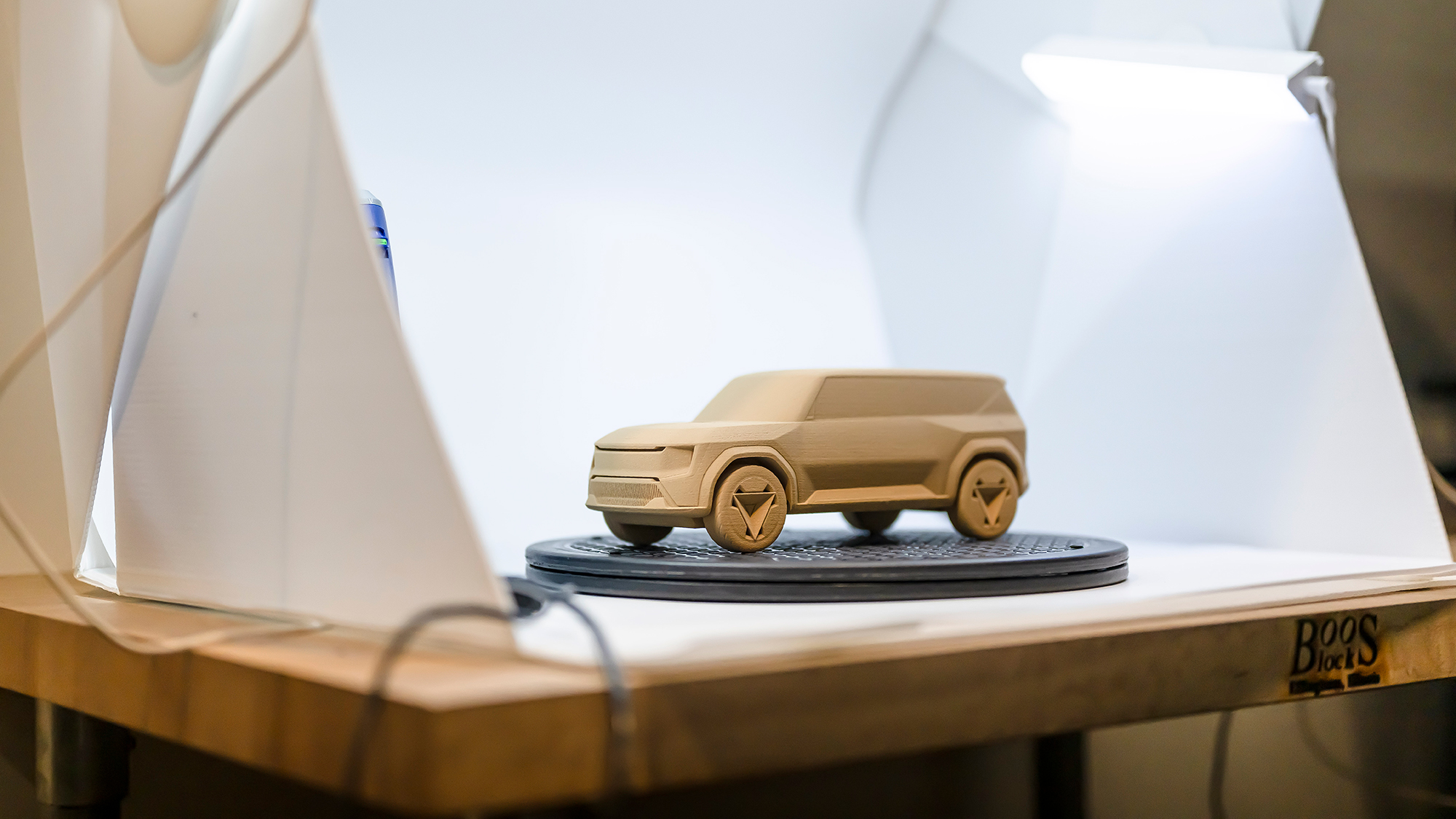

In general, we see cars as artificial and inanimate machines made from welded steel and plastic. But what if vehicles could be designed with the evolution of microorganisms in mind, representing a collaboration with nature? Kia, Hyundai, and Genesis are investigating that worldview with a group of young artists and scientists at the renowned Rhode Island School of Design.
Hyundai Motor Group (HMG), the parent company of all three brands, kicked off the RISD x Hyundai Motor Group Research Collaborative in 2019. Now in its fourth year, the unique partnership is focused on actively exploring the relationship between nature, art, and design for the good of humankind. Using phrases like “biologized skin” for robots and “chemotaxi processes” to describe movement, the team of students, professors, and HMG engineers and designers are challenging traditional ideas about how machines can work.
Here’s what to know about projects that RISD students have created with the future of Hyundai Motor Group in mind.
Using slime mold to mimic autonomous vehicles
While test-driving a brand-new 2024 Kia Seltos in and around Providence, Rhode Island with a group of journalists, we made a stop at RISD to hear from students in the program. In an initiative called Future Spaces and Autonomous Vehicles, students examined the future of autonomous vehicles using scientific methodologies combined with design-focused thinking.
The first presenter, 2023 graduate Manini Banerjee, studied at Brown and Harvard before making her way to RISD, and she challenged us to think about how a car might work if it were driven by organisms instead of algorithms.
In their research, Banerjee and her lab partner, Mehek Vohra, discovered that each autonomous vehicle processes 40 terabytes of data per hour; that’s the equivalent of typical use of an iPhone for 3,000 years, Banerjee says. The problem, she asserts, is that data processing and data storage relies heavily on carbon-emitting data centers, which only accelerates global warming. Vohra and Banerjee set out to find out if there is an opportunity for organic, sustainable data-free navigation.
[Related: Inside the lab that’s growing mushroom computers]
Using a slime mold organism as a vehicle, the team observed how the mold grows, learns, and adapts. In a cardboard maze, the slim mold organism mimicked the movements of autonomous vehicles. During the study, they noticed the slime mold learned how to find the maze’s center through sensing chemicals and light in its environment. Is it possible to replace carbon-heavy data processes with a nature-based solution? Yes, Banerjee says. (According to Texas A&M, slime molds exist in nature as a “blob,” similar to an amoeba, engulfing their food, which is mostly bacteria. And in related work, research out of the University of Chicago involved using slime mold in a smartwatch in 2022.)
“Civilization has been measured by this distance between the natural and the built environment,” she told the group. “I feel that we’ve begun to build that space with technological advancements.”
“Turn away from blindly pursuing innovation”
Today, designers and engineers look to the outside world to better understand physiology, patterns in nature, and beauty. The future of nature and cars as collaborators is front and center for the RISD and HMG partnership.
There are about 100,000 taxidermied specimens in RISD’s Nature Lab collection; it’s on par with a world-class natural history museum and has been around since 1939. Students can check out a specimen from the lab like one might check out a library book for study. For instance, studying the wings of the kingfisher may spur an idea for not just colors but patterns, textures, and utility. Observing the bone structure of a pelican for strength points or the ways an insect’s wing repels water can advance the way vehicles are made, too.
The RISD team is also exploring how to embrace entropy, or the degree of disorder or uncertainty in a system, versus strict mechanical processes. Sustainability is also an important element in this research, meaning that researchers should understand how materials break down instead of contributing to waste and climate change. Together, those two concepts inform the idea that engineering and technology can be programmed with built-in degradation (an expiration date, if you will) at the rate of human innovation.
“The intent is to turn away from blindly pursuing innovation and toward creating living machines that may restore our relationship with nature,” Banerjee said during a TedX presentation earlier this year. “If we understand the organisms we’re working with, we won’t have to hurt, edit, or decapitate them. We can move from ‘nature inspired’ to ‘nature collaborated.’”
